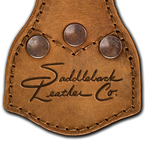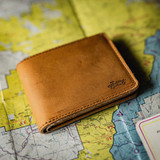How to Remove Stains from Leather?
These leather cleaning tips and techniques are used by the owner of Chamberlain’s Leathermilk, a leather cleaner and conditioner manufacturer and leather restoration specialist. Also contributing is the owner of ServPro, a professional crime scene, alien crash site clean up and deep cleaning service.
If you want to know how to remove stains from a leather couch, shoes, boots, a leather jacket or a briefcase, these leather cleaning tips will work for you. To clean off junk or to remove bad odors from leather, read about those here.
How to remove:
-
INK
-
OIL, WAX and GREASE
-
BLOOD
-
WINE, KOOL-AID or GATORADE
IMPORTANT: Always dab rather than rub and work from the outside towards the inside of the stain so it won’t spread out further. One of the main rules of stain removal is to be gentle as you clean. Also, the success of these techniques vary based on the type and condition of the leather. Always test cleaning on an inconspicuous surface.
How to Clean Oil, Grease ad Wax Stains from Leather?
Chamberlain’s Leather Cleaning Advice:
5 Sort of Easy Steps to Getting Oil, Grease, Wax from Leather
-
First put dry corn starch on the exact oil or grease spill area. Lightly make sure it’s rubbed on and leave it a night or two then use a soft brush and brush it off. If need be, do a second treatment.
-
In the morning, rub with water in the direction with the lines on the leather (grain).
-
Clean again with Chamberlain’s Straight Cleaner, Baby Shampoo or cut a lemon or lime in half and rub it on the spot. You can also get the leather degreaser product - Leather Master by Dr. Tork is good stuff. I like All Purpose Orange Cleaners.
-
Wipe off with clean and wet hot cloth.
-
Condition it with Chamberlain’s Leathermilk Conditioner.
ServPro’s Leather Cleaning Advice For Wax
-
Lay brown paper bag or paper towel on the wax and then a hot iron on top of that over and over again.
-
Or, put it in the freezer or put a bag of ice on it and then chip off the wax.
-
You’ll have a spot where the wax used to be, so do the oil and grease treatment to perfect it.
-
If nothing else is working, you can only try WD 40 first and then clean the leather again if it leaves an oily mark.
10 Steps to Clean Wax or Crayon off of Leather
-
Remove as much of the wax or crayon with a brush.
-
Vacuum to remove the loose particles.
-
Place a dry towel over the affected area
-
Make 3 or 4 passes with a hot iron across the top of the towel.
-
Dip a brush into the citrus-based solvent and apply to the area. Do not oversaturate. Gently agitate it for about 5 minutes.
-
Rinse the leather with hot water, but not vegetable tanned leather. Use a hot rag if it’s veg tanned.
-
With the wax/crayon gone, pour some Carpet and Upholstery Cleaner (RTU) onto the area so the remaining residue is removed.
-
Hot water rinse the leather again.
-
Dry quickly to avoid water stains on the leather. Put it directly in front of a fan or use a blow dryer, but not with veg tanned leather. Dry veg tanned leather at room temperature.
-
Moisturize once it’s dry with Chamberlain’s Leather Milk Leather Conditioner
How to remove INK from leather?
So, your toddler found a Sharpie permanent marker or pen and drew pretty lines on your expensive leather briefcase or couch and now you want to know how to clean the ink off. This is the hardest stain to clean off of leather and near impossible. Some would say you’re screwed, but not us. You can make it go away by using either the Committed Method or the Creative Method.
Chamberlain’s Committed Methods 1 & 2
-
Dab the leather with cleaner, do not rub it which smears the loose ink around.
-
With a fine little paint brush dipped in bleach or in a commercial grade hydrogen peroxide, carefully and exactly follow the ink lines to bleach out the ink spot. It will bleach the leather and damage it a tad, but that’s okay. You’re going to have a good story.
-
Get Furniture Clinic leather dyes, mix the right colors together on a small plate and then spot dye the leather. There will be instructions on the package how to mix them.
-
Condition the leather.
OR
-
Get some VERY fine sandpaper, like 1000 grit, fold it over and with the folded edge of it finely sand along the ink marks. It will damage the leather a little, but it may be better than the alternative.
-
Spot dye the spot you sanded off. You may want to sand off the leather around it so it isn’t really obvious that you cleaned just one spot.
-
Condition the leather.
Dave’s Creative Method
Take your leather to a really good artist or tattoo artist and have them finish the artwork that the toddler started, in a creative way. And when your artist kid gets old enough, they’ll carry that old briefcase (as long as you bought a quality one) into an interview and get asked about the artwork. They’ll have a good story and will get the job because he made them smile. Condition the leather afterwards.
How to Clean Red Dyes like Wine, Kool-Aid, Gatorade from leather?
Chamberlain’s Leather Cleaning Advice:
-
Dab a cotton ball into white vinegar and water mixed evenly or lemon juice with water or rubbing alcohol or hydrogen peroxide. We use Chamberlain Leathermilk’s Straight Leather Cleaner.
-
Dab specifically and then slightly rub the stain with a toothbrush.
-
Let it dry overnight.
-
Once dry, put corn starch or talcum powder on it and leave overnight again.
-
Remove the powder.
-
If the stain is still there, then put the same powder on it overnight again. Some say baking soda works, but we’re not sure.
SERVPRO’s Leather Cleaning Advice
Full restoration may not be possible if the stain has been there for an extended period of time or if previous soap-based cleaning has already been attempted because the stain will have been set in. This should always be tested in an inconspicuous area first in case the leather dry rubs off. Also, excessive heat may cause damage to the fibers.
Here are 9 Steps to Cleaning Red Dyes and Stains from Leather
-
Moisten the leather with clean water.
-
Sprinkle Natural Fabric brightener on the surface.
-
Cover with a wet cotton towel.
-
Apply heat and steam to the towel with an iron. Gently work the area with the tip of the iron. Check every 15 seconds.
-
Change the position of the tip as the color lifts.
-
Repeat as needed until your leather is clean.
-
Clean water rinse to remove chemical from the leather. If it’s not removed, it will probably bleach it.
-
Dry the leather overnight.
-
Moisturize it with Chamberlain’s Leather Conditioner.
How to get blood stains off of leather?
Chamberlain’s Leather Cleaning Advice:
A lot of it is the same as for wine, Kool-Aid or other stubborn stains.
Here are 6 Steps to Cleaning Blood Stains from Leather
-
Dab a cotton ball in white vinegar and water mixed evenly, lemon juice with water, rubbing alcohol or hydrogen peroxide. We use Chamberlain Leathermilk’s Straight Leather Cleaner.
-
Specifically dab and then slightly rub the stain with a toothbrush.
-
Let dry overnight.
-
When dry, corn starch or talcum powder on it and leave overnight again.
-
Remove powder.
-
If the stain is still there, then put the powder on it overnight again. Some say you can use baking soda, but I’m not sure.
But be careful, because a leather cleaner that has a high alcohol content that can lift the original color out of the leather. If that happens, you’ll have to spot dye the leather. And if you do, Patricia Chamberlain uses Furniture Clinic leather dyes which come with instructions.
SERVPRO’s Leather Cleaning Advice:
Bloodborne Pathogen & Other Potentially Infectious Materials
-
Use a damp towel (regular water) to clean as much of the contaminant off the leather.
-
Lightly put some hydrogen peroxide onto a new towel and use it to wipe off the leather. It’ll foam when it reacts with the mold. The reaction is caused by rapid oxidation which causes the mold to decompose. The foaming action helps lift the mold off the textile and makes it easier to clean. This may cause bleaching, so this should be tested in an inconspicuous spot. Over the counter hydrogen peroxide has the lowest incidence of this. If you use janitorial grade or laboratorial rate hydrogen peroxide, then bleaching will likely happen and you should definitely use chemical resistant gloves. We recommend the regular OTC. If the hydrogen peroxide works well, you can continue cleaning the rest of the leather.
-
Dry the leather.
-
Moisturize the leather after cleaning with a PH balanced leather conditioner.
Professionally, we always take the highest level of precaution with this type of cleaning (blood and other human fluids). We would use personal protective equipment to handle the object.









